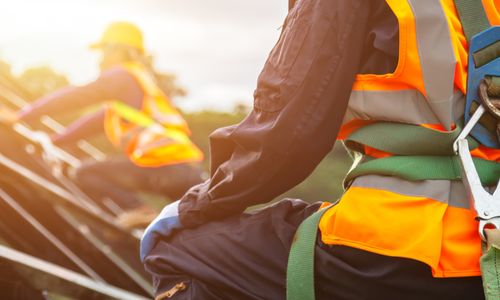ISO 45001
Achieving ISO 45001 certification? Essential! Safe and healthy working conditions are essential to the proper functioning of a company. As a QHSE professional, your job is to ensure safety and health...
Employees should be able to work healthily and safely until retirement. They must not become physically or mentally ill because of their work. To ensure this, there is the Working Conditions Act (Arbo Act). It contains laws and regulations on health and safety.
Workplaces or the equipment, such as machines, tools, can (sometimes seriously) damage workers' safety and health. Think about working with machinery that you can get trapped in, that you can seriously cut yourself on. Think about working with rolling equipment such as a lift or reach truck. There are also machines or installations that produce a lot of noise, which can cause workers to suffer hearing damage. Unsafe working at height on a ladder, scaffolding or unsecured roof can also lead to serious accidents. Finally, the lack of aids, such as a lifting aid or ergonomic tools, can lead to serious physical harm.
A healthy and safe workplace is unfortunately not a given. Working safely is not just about working with safe and approved equipment; safe behaviour is just as important. Clear information, clear work instructions, the correct use of equipment and regular maintenance and inspection increase safety. Employers and employees are jointly responsible for this. The RI&E identifies the main risks and measures to reduce them.
Put the employee at the centre by getting them involved in thinking about improving safety in the workplace. After all, they are at the centre of the process and know what does and does not work. Inform them periodically about existing and new safety and specific work risks and the control measures taken. Formulate clear safety and behavioural objectives together. What will "we" concretely do about H&S (un)desired behaviour, supervising third-party behaviour, toolbox topics, periodic QHSE consultations, BHV exercises, etc.
Without repetition, knowledge of safety regulations or first aid will fade. Regular knowledge review and training helps improve your employees' knowledge level and safety awareness, resulting in fewer incidents and higher efficiency and productivity.
In addition to its own staff, a company often employs employees of other companies (contractors), self-employed workers and trainees. Not everyone will be aware of all applicable regulations, making compliance difficult. So how can it be ensured that these third parties work safely, both for themselves and for the hiring company's staff?
Examples of third-party consultancy work are:
To achieve optimum working conditions, it is important to understand the occupational health and safety risks at all workplaces. Taking stock of those risks is the basis for creating a safe, healthy and pleasant working environment. A Risk Inventory & Evaluation (RI&E) including a Plan of Action is a legal obligation.
Our team of experienced consultants and safety experts map out the Health & Safety risks of your organisation's critical business processes and workplaces. They will gladly support you in your Risk Inventory & Evaluation and, if necessary, in-depth RI&Es! They look at the whole range of measures taken to control the risks and give advice where necessary to create a healthy and safe workplace.

Achieving ISO 45001 certification? Essential! Safe and healthy working conditions are essential to the proper functioning of a company. As a QHSE professional, your job is to ensure safety and health...

The VGM Checklist Contractors (VCA) is valuable for Dutch and Belgian companies carrying out high-risk work in high-risk environments. VCA is a multifaceted programme focusing on working safely and re...

In every company, circumstances occur that affect the safety, health and well-being of its (hired) employees and visitors. To achieve optimal working conditions, it is essential to understand the heal...

The Risk Inventory and Evaluation (RI&E) carried out may reveal the need for specific additional inventories or in-depth investigations. For example, do you work with hazardous substances or could...